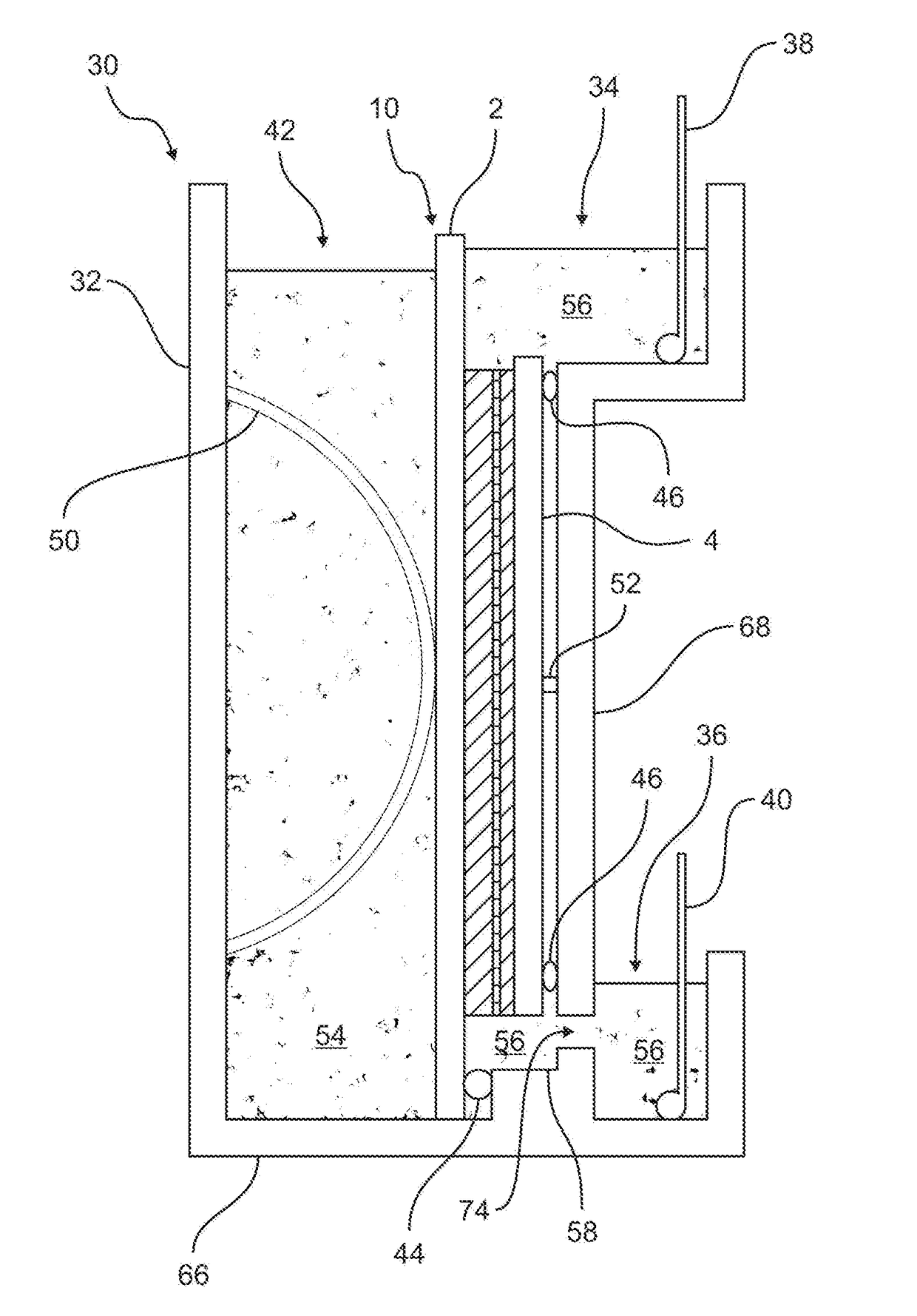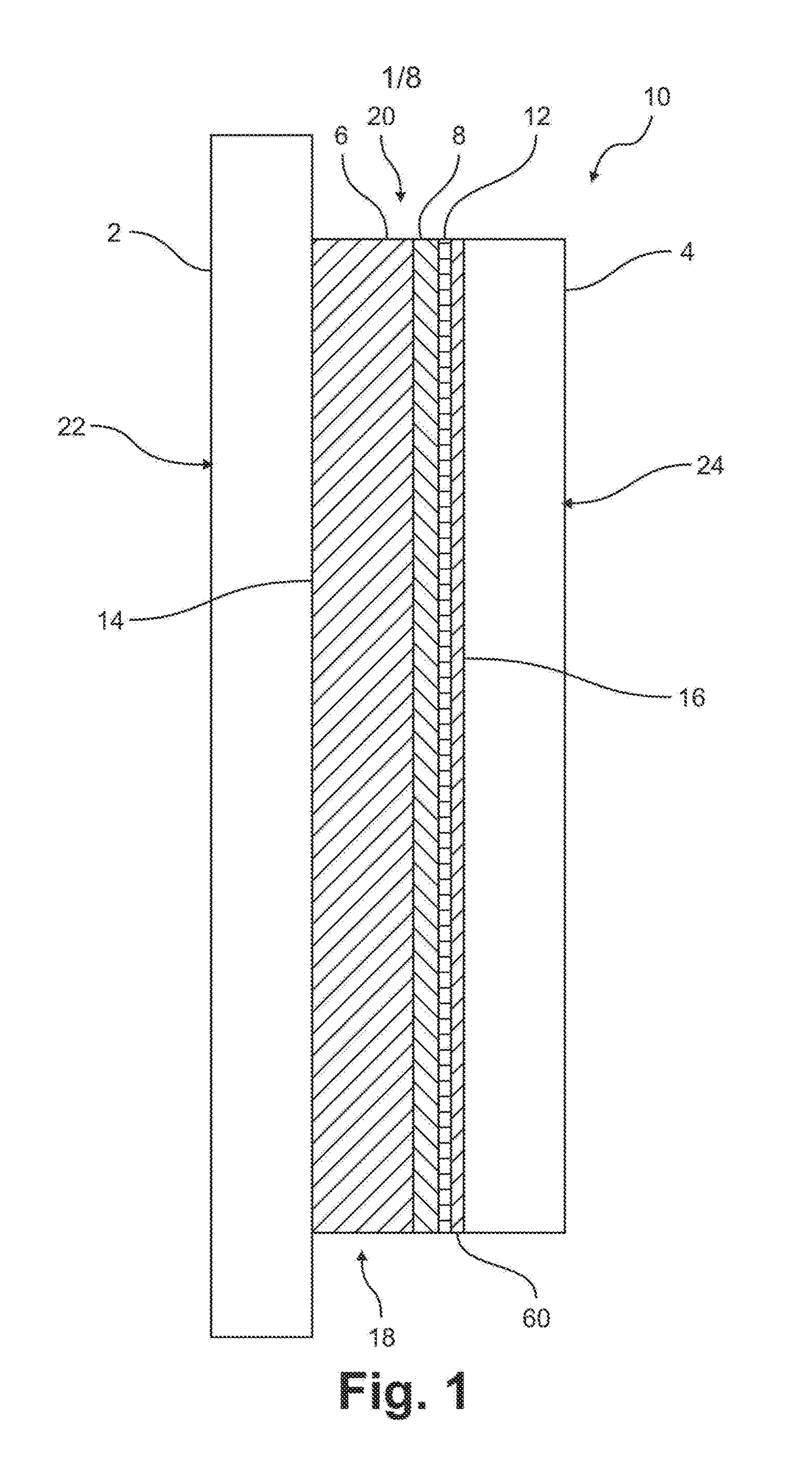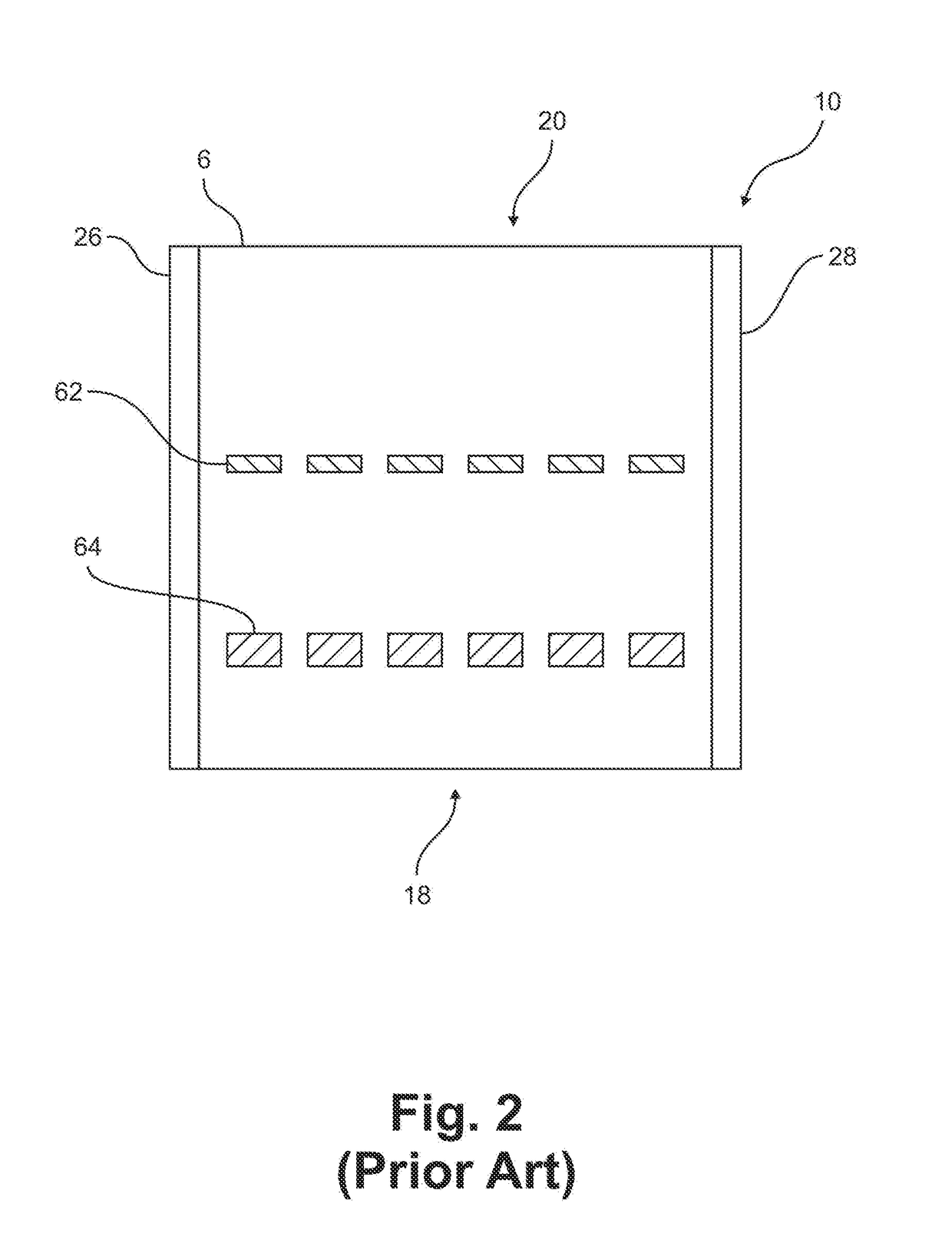Gel Electrophoresis and Transfer Combination using Conductive Polymers and Method of Use
a technology of conductive polymers and gel electrophoresis, which is applied in the field of gel electrophoresis and transfer of macromolecules, can solve the problems of limiting the use of non-transparent materials as gel supporting structural plates, limiting the use of insulating plastics as protein separation and transfer combination units, and affecting the efficiency of protein separation and transfer, etc., to achieve fast, reliable, and efficient protein transfer
- Summary
- Abstract
- Description
- Claims
- Application Information
AI Technical Summary
Benefits of technology
Problems solved by technology
Method used
Image
Examples
Embodiment Construction
OF SEMI-CONDUCTIVE PLATE COMPOSITIONS
[0084]Numerous formulations of transparent polymers can be to be used as the gel supporting plates. The transparent conductive / semiconductive polymer plates can be made of poly(pyrrole)s (PPY), polyacetylene, polyanilines (PANi), poly(thiophene)s (PT), poly(3,4-ethylenedioxythiophene) (PEDOT), poly(p-phenylene sulfide (PPS), poly(acetylene)s (PAC), and poly(p-phenylene vinylene) (PPV) and composites thereof. For example, PPY, one of the most well-characterized of the conductive / semi-conductive polymers, has been incorporated into composites with conventional / insulating polymers including acrylic polymers (see “Surface Characterization of Conductive Poly(methyl methacrylate) / Polypyrrole Composites,” Journal of Materials Science 35 (2000) 1743-1749), cellulose (see “A Nano cellulose Polypyrrole Composite Based on Tunicate Cellulose,” International Journal of Polymer Science, Volume 2013, Article ID 175609), polystyrene (see “Synthesis and Character...
PUM
| Property | Measurement | Unit |
|---|---|---|
| thickness | aaaaa | aaaaa |
| thickness | aaaaa | aaaaa |
| size | aaaaa | aaaaa |
Abstract
Description
Claims
Application Information
 Login to View More
Login to View More - R&D
- Intellectual Property
- Life Sciences
- Materials
- Tech Scout
- Unparalleled Data Quality
- Higher Quality Content
- 60% Fewer Hallucinations
Browse by: Latest US Patents, China's latest patents, Technical Efficacy Thesaurus, Application Domain, Technology Topic, Popular Technical Reports.
© 2025 PatSnap. All rights reserved.Legal|Privacy policy|Modern Slavery Act Transparency Statement|Sitemap|About US| Contact US: help@patsnap.com



